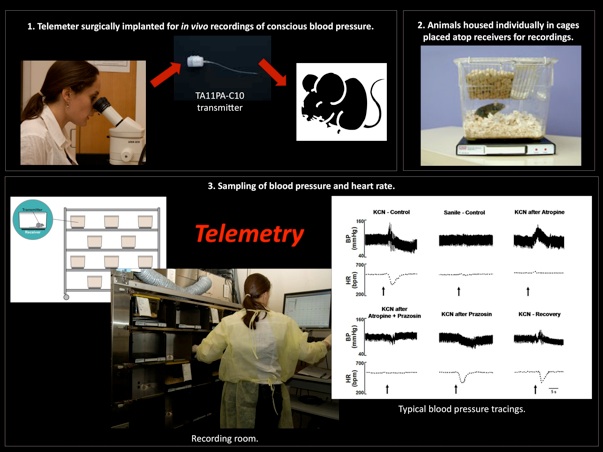Longitudinal non-invasive measurements of blood pressure, autonomic function and baroreflex in mice using radiotelemetry
- Recognizing the critical need to perform non-invasive, long-term measurements of blood pressure in the mouse, Dr. Davisson pioneered the use of telemetry in this species nearly a decade ago.
- Compared to other methods of measuring blood pressure (e.g., tail cuff, exteriorized catheter), data acquired with telemetry are free from physiological and psychological stress- and anesthesia-induced artifact. Moreover, telemeters make use of a novel catheter design that features a gel-filled tip that does not require flushing, thereby increasing patency and extending the period of time during which blood pressure can be recorded. There is also the increased chance of capturing occasional and transient events over a long period as well as a reduction in the number of animals required due to more and better quality data.
- Continuous recordings using telemetry also facilitate the assessment of a number of other cardiovascular parameters such as autonomic function, spontaneous baroreflex sensitivity, circadian variations or the blood pressure response to treatments (e.g., changes in ambient temperature, drug administration, dietary salt, caloric restriction, exercise, stress, pregnancy, etc.).



